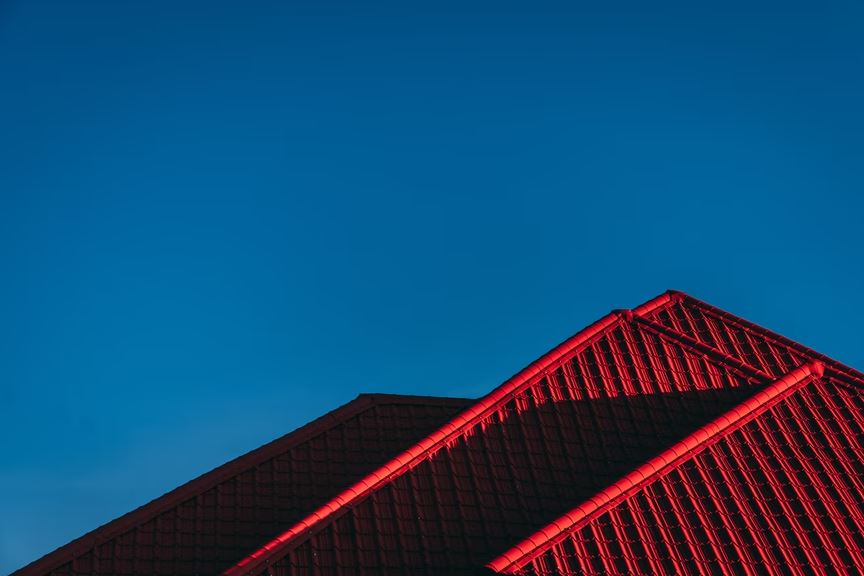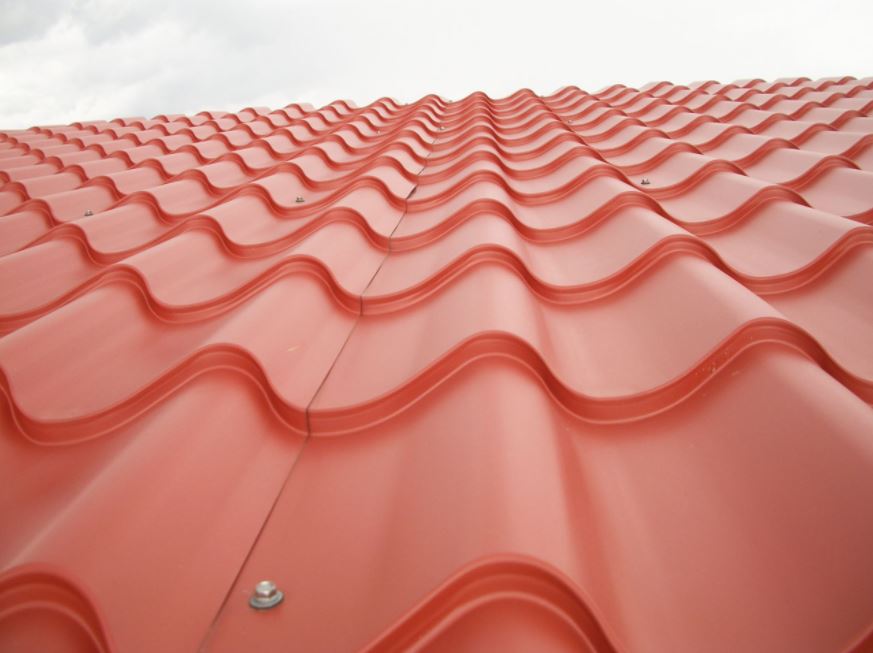If your current roof is costing you a lot in repairs, you probably need replacement. Metal roofing is an excellent choice and one of the best roofing material options you can have. It offers a variety of benefits and a few drawbacks as well. But if you’re looking into a roofing solution, check the pros and cons of having a metal roof so you can get an informed decision:
Pros:
Metal roofing beats out other conventional roofing materials in several ways:
1. Long-lasting
At the top of the pros list is the long lifespan of a metal roof. Many homeowners nowadays prefer metal roofing when replacing their roof or getting new construction. It’s an investment that can keep your roof looking great and strong for decades with proper maintenance. Many manufacturers offer a 50-year warranty on a metal roof, while traditional roofing materials only have warranties of 20 years.
Thanks to the material’s unique durability, you can count on metal roofs to withstand elements and not corrode or crack due to its rust-proof coatings.
For comparison, here’s how long other roof materials are expected to last:
- Asphalt shingles – 20 years
- Fiber cement shingles – 25 years
- Wood shingles and shakes – 30 years
- Tar and gravel – 20-25 years.
- Meanwhile, metal roofs are expected to last for 50 years, which is about the same as:
- Simulated slate – 50 years
- Real slate – 50 or more years
- Clay or concrete tile roofing – more than 50 years
Most major metal roof makers give a warranty to their products for 20 to 50 years. Take note that harsh climate, poor workmanship, and damage from severe weather can shorten any life expectancy for roofs.
2. Energy-efficient
Metal reflects heat from the sun instead of absorbing it. This reflective characteristic means you can save the energy needed for air conditioning during the day. Since it reflects solar heat and doesn’t absorb it, you can reduce your energy costs in the summer by up to 25 percent. Also, some metal roofing materials are coated with special reflective pigments to minimize heat gain, so you can be comfortable without having to crank up the AC.
3. Easy to install
Metal roofing materials are available as large, standing-seam sheets or in multiple-shingle sections that are 12 to 36 inches wide. The standing seam sheets are usually 3 feet wide by 6-16 feet long. You can also avail of it in custom sizes. A roofing contractor can install it quickly, so if your roof gets stripped off and there’s a storm on the way, a metal roofing material can shorten the installation process by a day or two.
4. Fire-resistant
Since metals are non-combustible, they usually have a Class A fire rating, so flying sparks and embers won’t set them on fire. Just be aware that part of the roof’s overall fire-resistant rating depends on the materials beneath the surface that may ignite due to intense heat. Metal roofs that are applied over a combustible material such as wood have a lower rating for this reason.
5. Great for rainy or snowy places
As a roofing material, metal is practically impervious to rain and snow because of the panel interlocking design and also because of its hard and slippery surface. In addition, dark toned-metal roofs can quickly warm under the sun, encouraging the melting of snow.
6. Lightweight
Metal roofing material weighs from one to three pounds per square foot, depending on the thickness and profile of the material. It’s one of the lightest of all roofing materials, so the good news is you can save on the building and engineering of the support structure. In fact, if you’re building a new house, you can downsize the roof support members because the metal is lightweight.
7. Can go over existing shingles
As long as the existing roof surface isn’t rotting and the decking beneath it is flat and sound, you can apply metal roofing on top of the old one. It’s relevant if you are aware of the advantages of leaving the old roof in. For instance, it can leave an extra insulation barrier for increased energy efficiency and add additional sound insulation for rain and hail.
8. Environmentally-friendly
If you’re looking for a more sustainable roofing material without compromising on durability, metal roofing is the way to go. This material is more eco-friendly because it uses 25 percent or more recycled materials and is also fully recyclable once it wears out its lifespan. Compared to traditional shingles that are made of petroleum, it’s not dependent on fossil fuels to be produced.
Metal roofing also offers a great platform for homeowners to embark on different eco-conscious initiatives, such as solar panels and systems for harvesting rainwater. And since it can be installed directly on top of asphalt shingles, it saves the waste of ripping off the old roofing and sending it to a landfill.
9. Great for low-pitched roofs
Most asphalt or roof shingles cannot be installed on a roof with a lower pitch than 3-in-12, which means the roof rises three inches for each horizontal foot. Other materials like tile need a slope that’s 4-in-12 or even steeper.
But for metal, it can be installed on gently pitched roofs without risk of leaking. Some standing-seam roofing can be used on 2-in-12 roof pitches or even as low as 1-in-12.
10. Stylish
When you think of metal roofing, you may imagine corrugated tin. But today’s metal roofs are a far cry from that old idea – now, you can choose from tin, aluminum, copper, zinc, or galvanized steel in an overwhelming array of colors, finishes, and even shapes. Its available variety in the market surpasses anything that could occur from traditional asphalt roofing. While asphalt can be available from 15 to 20 different colors, modern metal roofing comes in more than 100 colors. Steel and aluminum roofing are both designed to hold paint finishes well.
Metal roofing doesn’t have to be an eyesore. It can imitate the look of any other material. You can even opt for metal shingles manufactured to resemble slate, wood shakes, or clay tiles.
Cons:
Though metal roofing offers a lot of benefits, a few drawbacks are worthy of looking at if you’re considering it as a roofing material.
1. Can be noisy
Some people like the noise of rain as it hits a metal roof. But this can be a drawback, depending on your preferences. Metal roofs can be noisy during heavy rain or thunderstorm and might affect what you’re doing indoors during the storm if you are particular with noises. It will most likely be noisier than living underneath a thick slate or tile roof during a hailstorm or a thunderstorm. If the noise due to the rain falling on your roof is a concern, you can have a contractor install more layers of insulation or solid sheathing to minimize the noise heard inside.
2. Expensive
A big issue with metal roofing is the huge upfront cost. The materials can be much more expensive than traditional asphalt shingles, and labor and installation can also be more expensive. Metal roofing can cost about the same as other premium materials – from about $150 to $600 per square.
But because of the material’s long-term durability, you will actually save in the long run, including seasonal maintenance. You can also get a reasonable return on your investment in case you decide to sell the house in the future.
3. Can dent
Though modern metal roofs are designed to withstand decades of abuse from weather, some metal roofing material can still be dented by large hail or falling branches. Generally, a metal roof is easier to dent than traditional asphalt shingles. If you live in a place that experiences hail the size of a golf ball, the hail will probably dent your metal roof, especially if it’s made of softer kinds of metal like copper or aluminum.
If this is a deal-breaker, rest assured that it can be prevented altogether if you choose the right shingle and sturdier type of metal, such as steel. You can also choose metal roofing shingles, metal roofing shakes, or a roofing with a ribbed structure or pattern that makes it more rigid. For maximum durability, choose 24- or 26-gauge steel.
4. Slippery
Metal roofs can be slippery when wet or when covered with snow. It’s never a good idea to climb on a metal roof when it’s moist, snowy, or wet outside. They can be so slippery that snow will slide off the roof, unlike in asphalt-shingled homes where people may need to rake snow off their roofs in the winter. But even when dry, metal roofs will be more slippery than other types of roofing.
If you do need to climb on a metal roof for some form of maintenance, your first line of protection is a trusty pair of boots with grip. If you’re moving any materials around or doing any significant repair work, use standard fall=arrest equipment, including a harness with a safety rope.
5. Improper installation can cause issues
Always find a reputable roofing contractor if you need a metal roof installed. Unlike wood shingles, asphalt shingles, or most other roofing materials, metal is a material that few roofers are trained and practiced at installing.
If you don’t hire an experienced roofer, it can lead to a lot of issues. For instance, the metal needs to breathe, expand and contract. By the way, metal expands and contracts as it warms and cools. If it isn’t installed properly, the metal panels might loosen, causing leaks. If screws attach to flat surfaces rather than the raised ridges, rainwater can run down the roof and seep into the screw holes.


